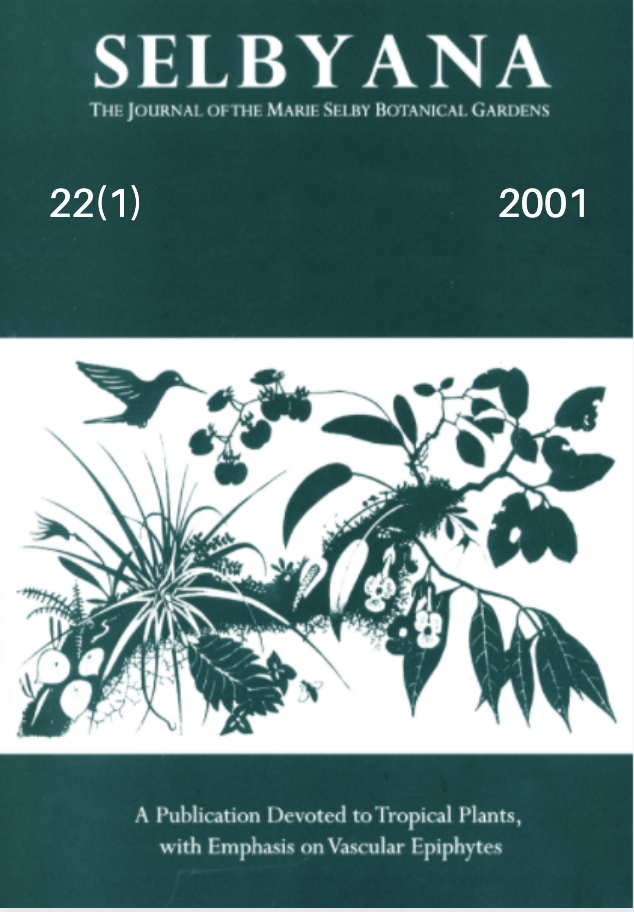Abstract
Fitzroya cupressoides, or alerce, a massive conifer that occurs in southern Chile and southwestern Argentina, is known for exceptional longevity—a 3622-year crossdated chronology established the alerce as the second longest-living tree after California's Pinus longaeva. Despite the critical ecological significance and endangered status of the alerce, remarkably little is known about the crown habitat in these trees, including their plant and insect communities. In a preliminary assessment of alerce crown structure and plant and arthropod diversity, seven alerce individuals were climbed and surveyed in January 1998. The trunk and crown structure of each tree were measured and lianas, epiphytes, and arthropods were sampled in a series of height-stratified plots. Filmy ferns were the dominant vascular epiphytes while bryophytes, lichens, and three species of lianas were also abundant in well-developed communities. Several trees and shrubs were also discovered growing epiphytically in the alerce crowns. Arthropod diversity and abundance were very low, even compared with conifers from climatically similar habitats in the United States Pacific Northwest. Herbivory was negligible—less than 1% in all foliage samples.
Open Access and Copyright Notice
Selbyana is committed to real and immediate open access for academic work. All of Selbyana's articles and reviews are free to access immediately upon publication. There are no author charges (APCs) prior to publication, and no charges for readers to download articles and reviews for their own scholarly use. To facilitate this, Selbyana depends on the financial backing of the Marie Selby Botanical Gardens, the hard work and dedication of its editorial team and advisory board, and the continuing support of its network of peer reviewers and partner institutions.
Authors are free to choose which open license they would like to use for their work. Our default license is the Creative Commons Attribution-NonCommercial 4.0 (CC BY-NC 4.0). While Selbyana’s articles can be copied by anyone for noncommercial purposes if proper credit is given, all materials are published under an open-access license with authors retaining full and permanent ownership of their work. The author grants Selbyana a perpetual, non-exclusive right to publish the work and to include it in other aggregations and indexes to achieve broader impact and visibility.
Authors are responsible for and required to ascertain that they are in possession of image rights for any and all photographs, illustrations, and figures included in their work or to obtain publication or reproduction rights from the rights holders. Contents of the journal will be registered with the Directory of Open Access Journals and similar repositories. Authors are encouraged to store their work elsewhere, for instance in institutional repositories or personal websites, including commercial sites such as academia.edu, to increase circulation (see The Effects of Open Access).
